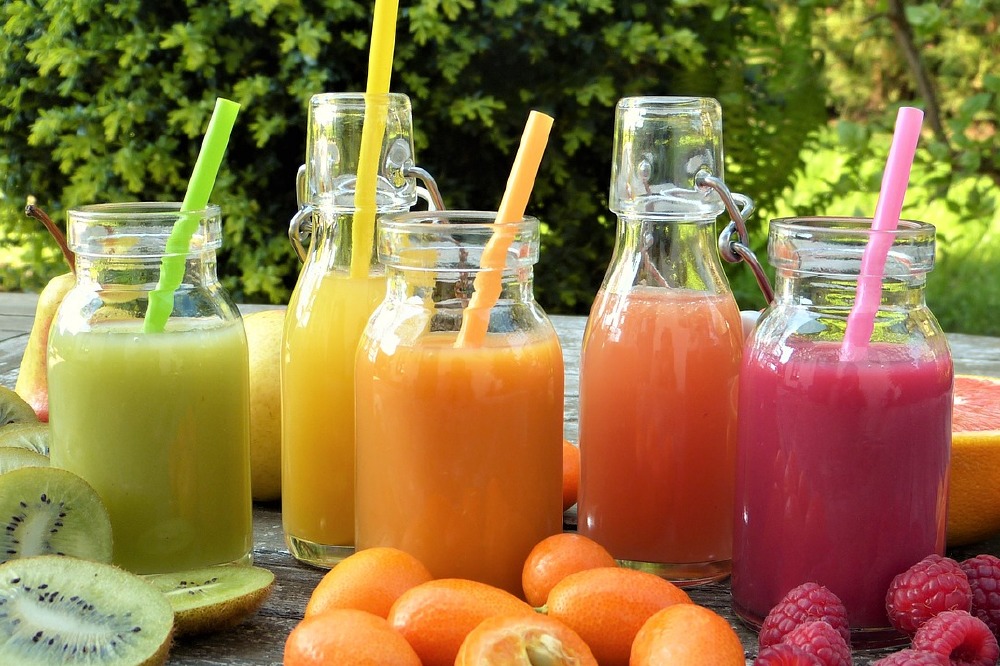By João Gouveia, Founder of INIU

They’re a great source of nutrients and vitamins, while curbing your appetite with practically zero fat content
We don’t need big survey figures or trends report facts to know that, in the 21st Century, almost all of us are trying to live a healthier, well-balanced lifestyle. And one of the most easy, obvious (and delicious) ways to get vitamins and nutrients is through drinking juices.
Far from exclusively being utilised by the metropolitan elite and gym bunnies and bros, the rise and rise of the juice trend has made it a widely accepted part of a healthy lifestyle and diet. They’re a great source of nutrients and vitamins, while curbing your appetite with practically zero fat content. The problem we’ve found is that there are just so many different types to choose from. And we’re not talking about recipes. That’s why we’ve taken the time to gather up the lowdown on the pros and cons of juice hierarchy.
Soft drinks
At the bottom of the pile comes soft drinks, sadly no surprises there. With additives and preservatives galore, they’re not natural and they’re not particularly nutritious. What they are is easy. You take your pick, drink your drink and recycle the bottle; no time or materials wasted and you’re 100% guaranteed to always get the same taste.
Pasteurised juices
A pasteurised juice basically means that your juice has been put through high heat to kill off any microorganisms that could make you ill or spoil your juice. In short, it increases shelf life. Very easy on your time budget, and obviously consistent taste-wise.
However, this flash-heating can kill more than just the bad enzymes, the proteins are also affected by the exposure, and all that juicy goodness is gone. That means your naturally occurring fructose is no longer coupled with live enzymes and nutrients, it’s just sugar.
Cold-press juices
Cold-press juice is interesting, as it’s still just a bottled juice (and so comes with all the consistency and ease benefits), but the process itself is different. Cold-pressing avoids exposing the ingredients to oxygen and heat, both of which as we now know can kill the nutrients you’re trying to get to. Sounds like a great thing, right? Unfortunately, blanket statements of “good and bad” don’t really work in nutrition and what works for one fruit or vegetable won’t necessarily apply to another. The process just extracts the liquid from the ingredients, meaning you lose all that fibre. And although these have less preservatives, that doesn’t mean they have less additives or are entirely natural.
Home-made (part I)
Immediately the nutritional value is a winner here, you mix and match anything you like (or have lying around) for a better balance between fruit and veg, and you can decide things like whether to keep skins on (where possible) for a little more fibre. These will also obviously be totally natural, with no added nasties.
Unfortunately, all of those benefits come at a cost. Your juices aren’t definitely going to be consistent, and they certainly aren’t going to be energy-friendly or waste-friendly. Maybe you have the time to prepare fresh juices every morning without ending up with a bunch of fruit slowly melding into one furry fruit-bowl nightmare, but we don’t.
Home-made (part II)
We wanted to mention those bags of frozen fruit you can get, often in readymade recipes. These are obviously natural and free of nasties, but while they definitely cut down the preparation time, they also eliminate the skin-on fruit & veg options and the added nutritional benefits there.
Flash-frozen juices
This combines the best bits from making a juice at home (leaving the skin on where possible in order to increase fibre, and a balance of fruit and vegetables) with the convenience of shop-bought juices. Using cryogenic processes similar to those used to preserve stem cells, fruits and vegetables are flash frozen into a pulp that you store in your freezer. These come in ready-to-blend recipe pouches to give a good nutritional balance. This means you get all the fibres and vitamins you’re aiming for, safe in the knowledge that freezing something when it’s fresh keeps it fresh, but freezing something within about a minute and a half keeps it fresher. It’s as simple as throwing what you have lying around into a blender, but a lot more nutritious.
INIU are the pioneers in this field and have recently been nominated for the Innovation Award at the Food Entrepreneur Show in London.
So, there you have it; the juice hierarchy. All have their pros and cons and sometimes hassle-free will weigh more heavily than healthy and sugar free (we’re all human after all!), but with a little forward planning it is possible to choose a juice that is delicious, balanced and full of nutrients – without the sugar and the hassle of peeling, coring and blending.

ABOUT THE AUTHOR
João Gouveia, Founder of INIU – a range of functional fruit and vegetable juices that are 100% natural, with no added sugar, preservatives or other additives. Cryogenically frozen, INIU juices retain up to 99% of their nutrients and taste; as good as if you’d made them yourself. Store the juice in your freezer and when you’re ready simply add water and blend. A fresh, 100% natural juice with all the best bits of nature in under a minute.
Launched in Portugal in 2017, INIU was nominated for the Innovation Award at the Food Entrepreneur Show 2018 in London and is now launching in the UK. INIU’s mission is to develop products built on the foundations of health and convenience.
www.iniu.pt
facebook.com/iniuyourtruenature
instagram.com/iniu_yourtruenature
Sources:
➔ http://www.huffingtonpost.ca/2014/03/21/juicing-benefits_n_5007719.html
➔ http://benefitsofjuicing.net/store-bought-juices-vs-homemade-juices/
➔ https://fitlife.tv/fruit-juice-types-the-various-types-of-fruit-juice_kw70/
➔ http://www.lifewithgreens.com/fresh-versus-bottled-juice
➔ https://mywellbeingjournal.com/2017/04/18/whats-the-difference-between-cold-pressed-and-fresh-juice/
➔ https://www.wired.com/2015/04/nobody-can-prove-cold-pressed-juice-better/
➔ https://www.ukjuicers.com/info/cold-pressed-juice-homemade-vs-pre-packed-a626
Tagged in Vitamins

